In spring this year, we featured a tour of the just-opened holiday cottage called Little Mill Abergavenny. Over the summer, hosts Hayley Caradoc-Hodgkins and Leo Bruno Todd welcomed a steady stream of guests eager to experience their whimsical Welsh interiors in this magical pocket of Monmouthshire.
Then, this autumn, the couple opened a second, smaller cottage for two called Maen Melin, the Welsh word for “millstone.” (“The original millstone is still in situ,” explains Hayley. “It’s right next to the sofa.”) The cottage had stood derelict for many years and was partially renovated by the mill’s previous owners. “They did a lot of the dirty work, if I’m honest,” Hayley says. “They really got it in a shocking state of repair. It definitely was a two- generation restoration job.”
The kitchen in Maen Melin is located above the former cart shed in a room devoid of original features. “It was never intended for use as a kitchen, so it needed some character adding,” Hayley says. She was tasked with creating a welcoming kitchen from an awkward room with a slanted roof and wonky walls. “I always feel slightly disappointed when I stay somewhere and the kitchen feels either poorly stocked or slightly sterile,” she says. “Cooking is such a joy to do when you’re away and you actually have the time. I want people to feel inspired to do that here, to be in a space that feels welcoming, inspiring; a space you actually want to hang out and cook in.”
Let’s take a look around:


The sink became the starting point for Hayley, who wanted to conjure “a sense of history without necessarily being historically accurate.”
“I’m a sucker for sanitary ware,” Hayley says. “I’ve always been really nerdy about it.” She found this cream stoneware sink with legs on eBay: “I’m up against the antique dealers who buy them and then triple the price,” she says. “This was a rogue one that slipped through the net.”
The unit around the sink has been pieced together from secondhand finds: a Victorian draining board; a wooden cupboard bought from a local auction house, and some sanded and waxed wooden floorboards, all for a total cost of £150. “I just wanted it to feel like it had been there forever,” says Hayley.
In the centre of the room is a wide farmhouse table on wheels, another auction find. “We’re really lucky in Wales because antiques are less expensive here than they might be in other areas,” says Hayley. “Plus, pieces like this aren’t practical for many kitchens, but it really works here because it’s on wheels, so it can be moved around and it has two really massive drawers.”

To the left of the entrance are two pieces of wooden furniture: a wall-mounted shelf and a pine wash stand, both auction-house finds. “I tend to try and keep it local because otherwise shipping costs get a little bit out of control,” says Hayley, who paired these two pieces as a way to display glasses and crockery: “I’m not a big fan of kind of everything shut away in kitchen.”

Hayley spent three days waxing the central table: “It’s marked and it’s clearly had loads of use, but it’s so sturdy. It will just go on and on and on.” The table is lit by a fabric pendant light made by Hayley from a vintage linen tea towel. “I’ve collected beautiful napkins and hankies for some time now, and I just started to make these simple lights myself,” she says. “When it’s on, it gives out such a warm glow.” (The cloth lights in Little Mill started us noticing a trend in cloth light fixtures that now we’re seeing everywhere; have a look at Trend Alert: The Draped-Cloth Light Fixture for a few examples.)

The colors in Maen Melin were inspired by a visit to Our Lord in the Attic, a museum in Amsterdam, which Hayley describes as “out of this world.” The museum is an authentically preserved canal house from the 17th century with a complete Catholic church constructed in the attic. But for Hayley, it was the below-stairs kitchens that she found captivating: “That’s where I first saw this plum color, combined with greens and yellows and these beautiful Delft tiles. It was a massive inspiration to me.”

The hooks are paired with a delicate lace trim above the window recess. Another lacy border adorns the doorframe, a tribute to Hayley’s Estonian grandmother, whose family also once owned a mill. “My grandmother was a refugee who came to the UK and lived in a council flat in Kingston that she frilled-up with lace trims like these. These really remind of my Nan, my heritage, and where I’m from.”
For more, head to Maen Melin.
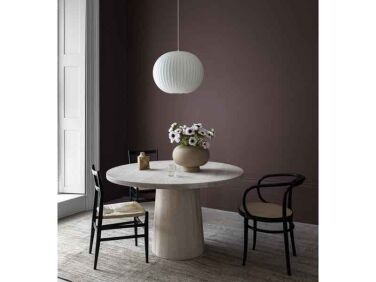
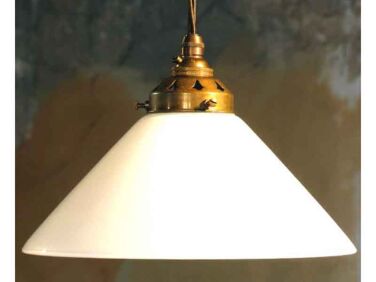
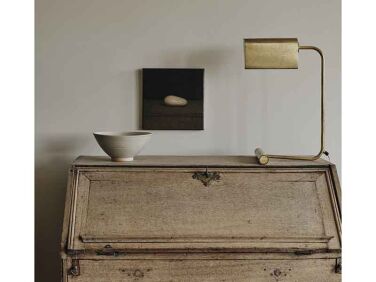
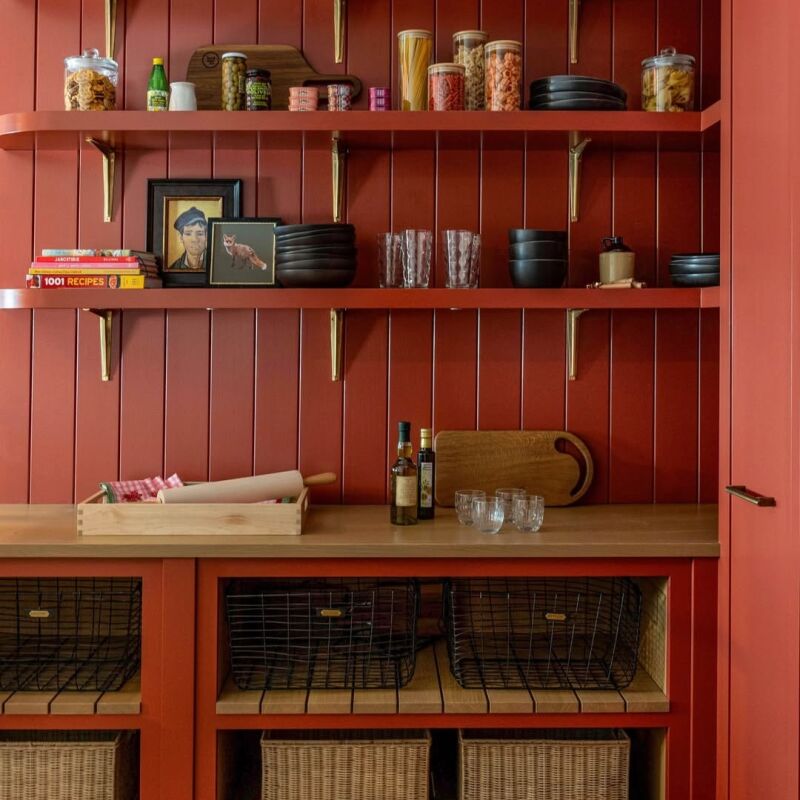
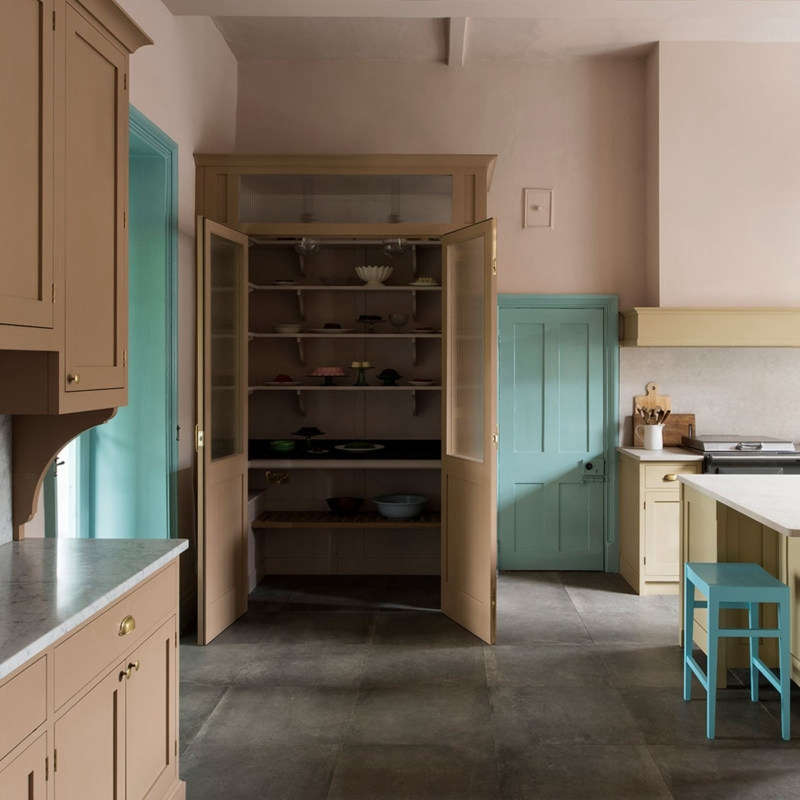
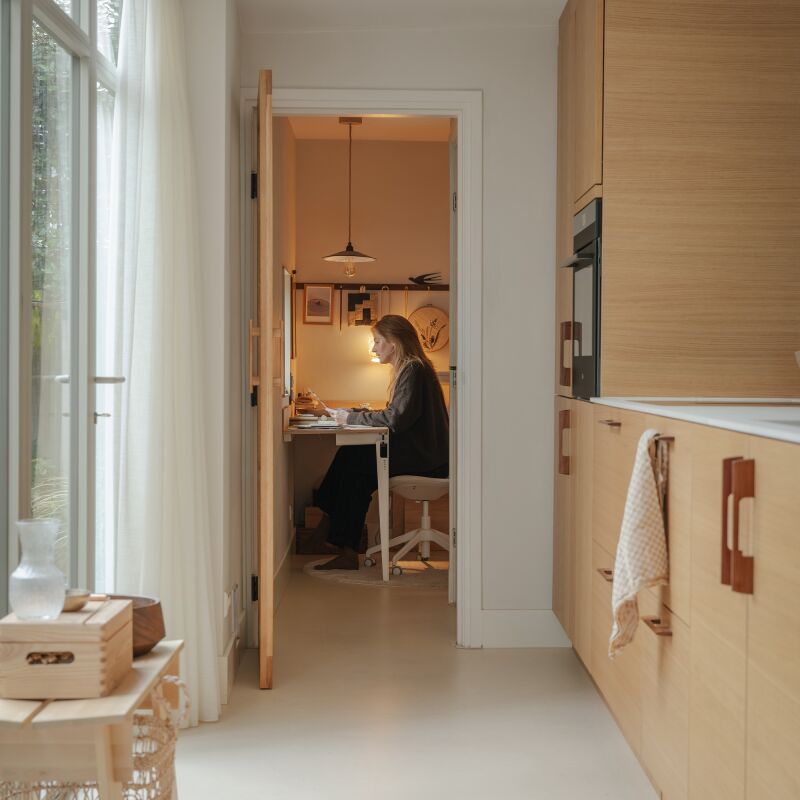

Have a Question or Comment About This Post?
Join the conversation (1)